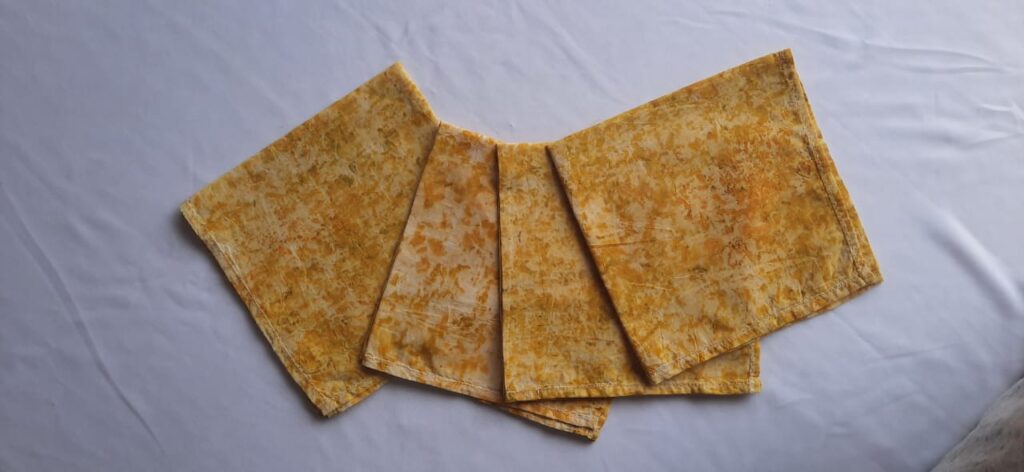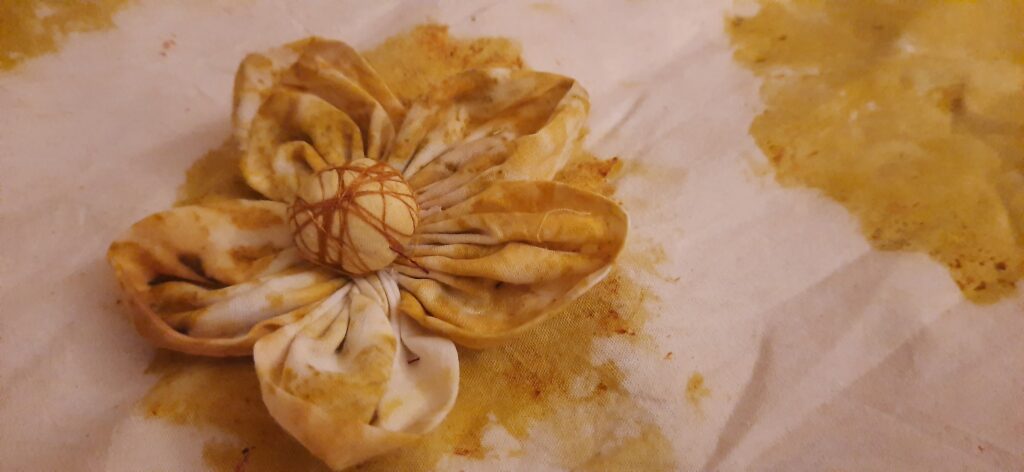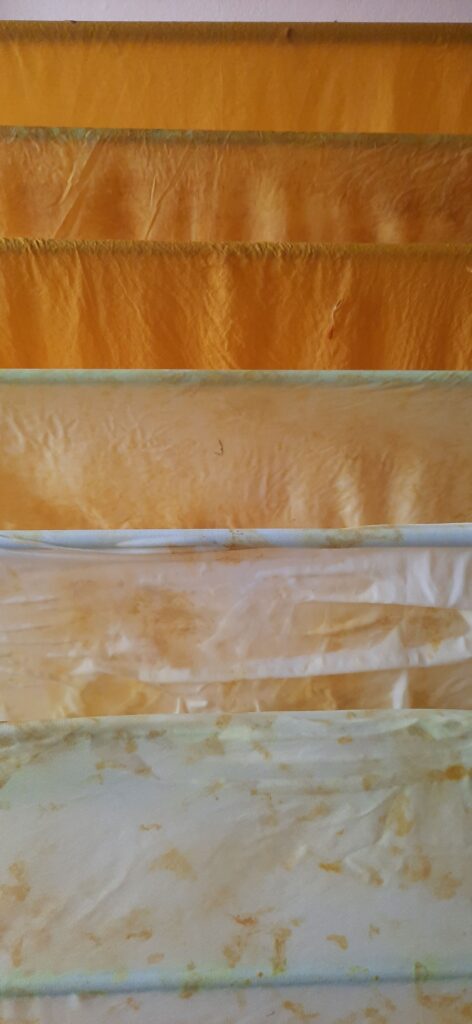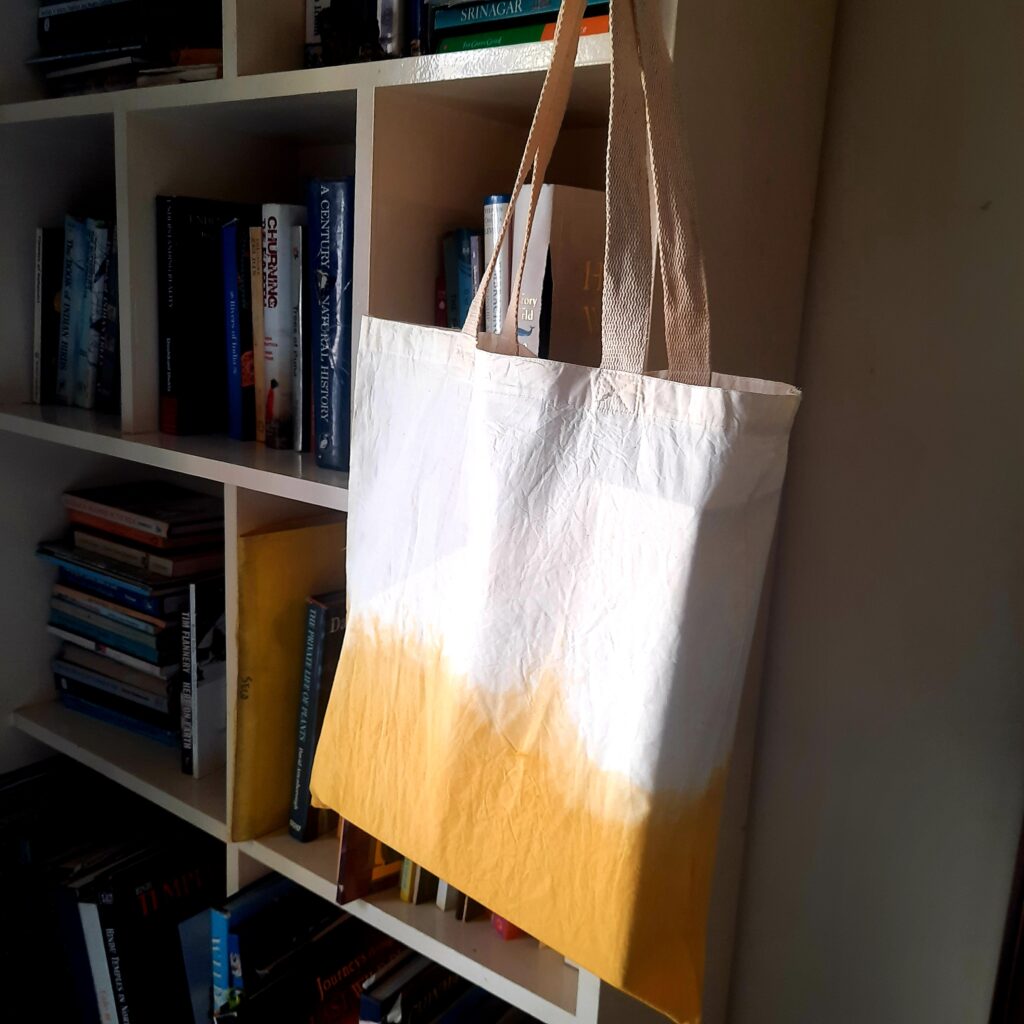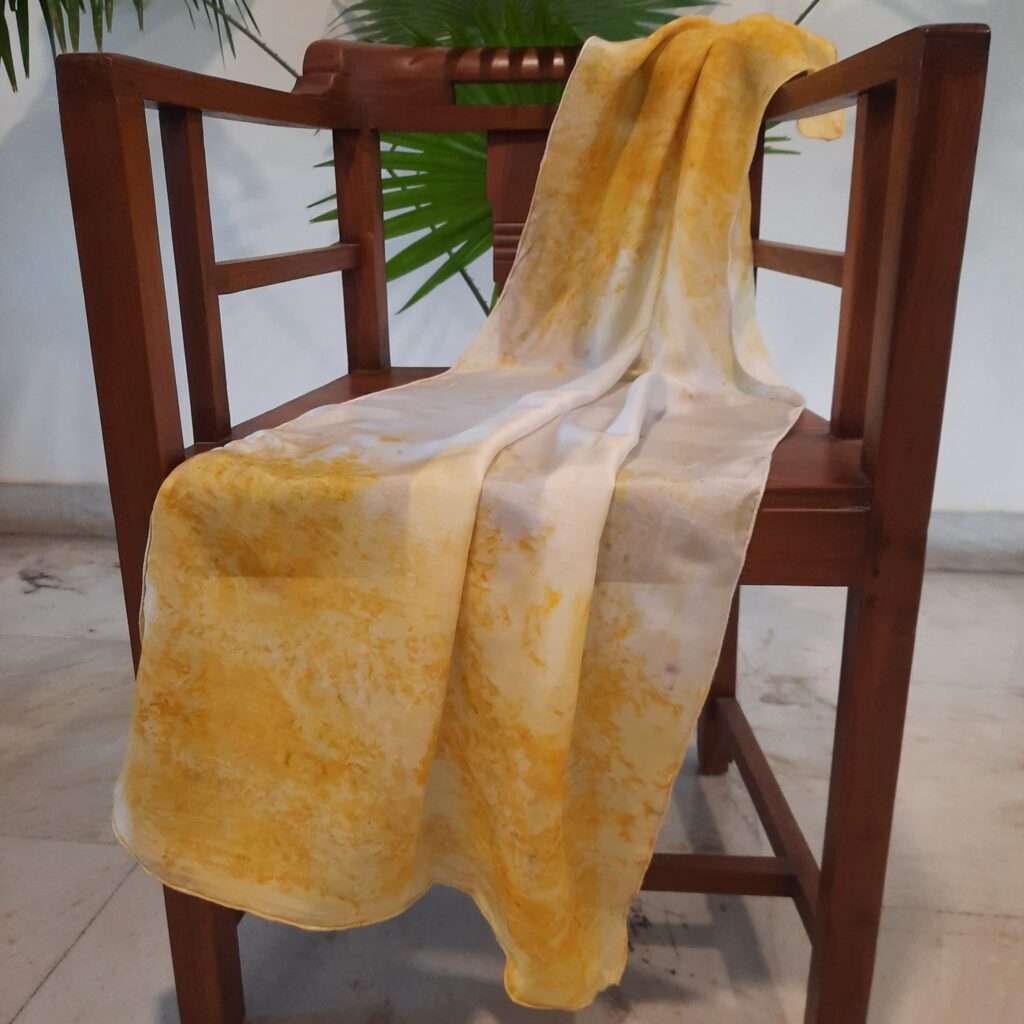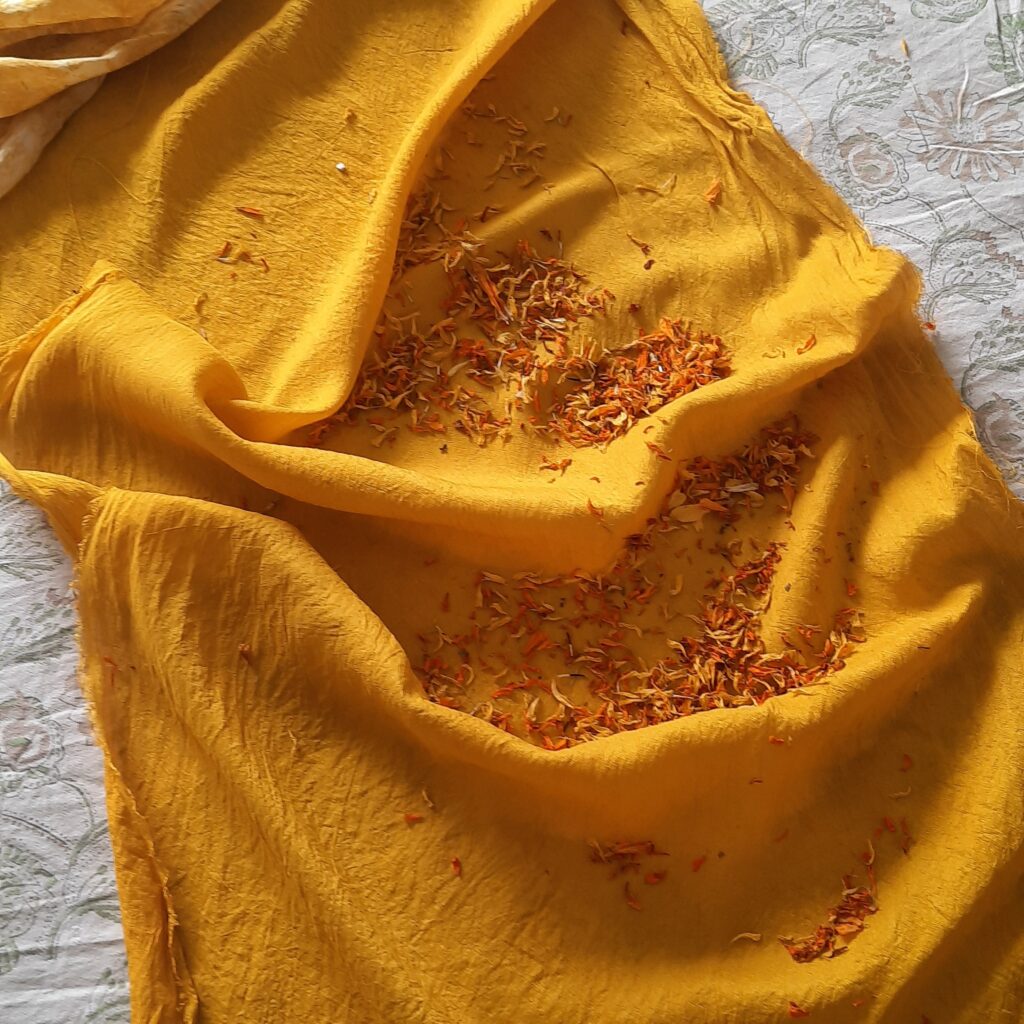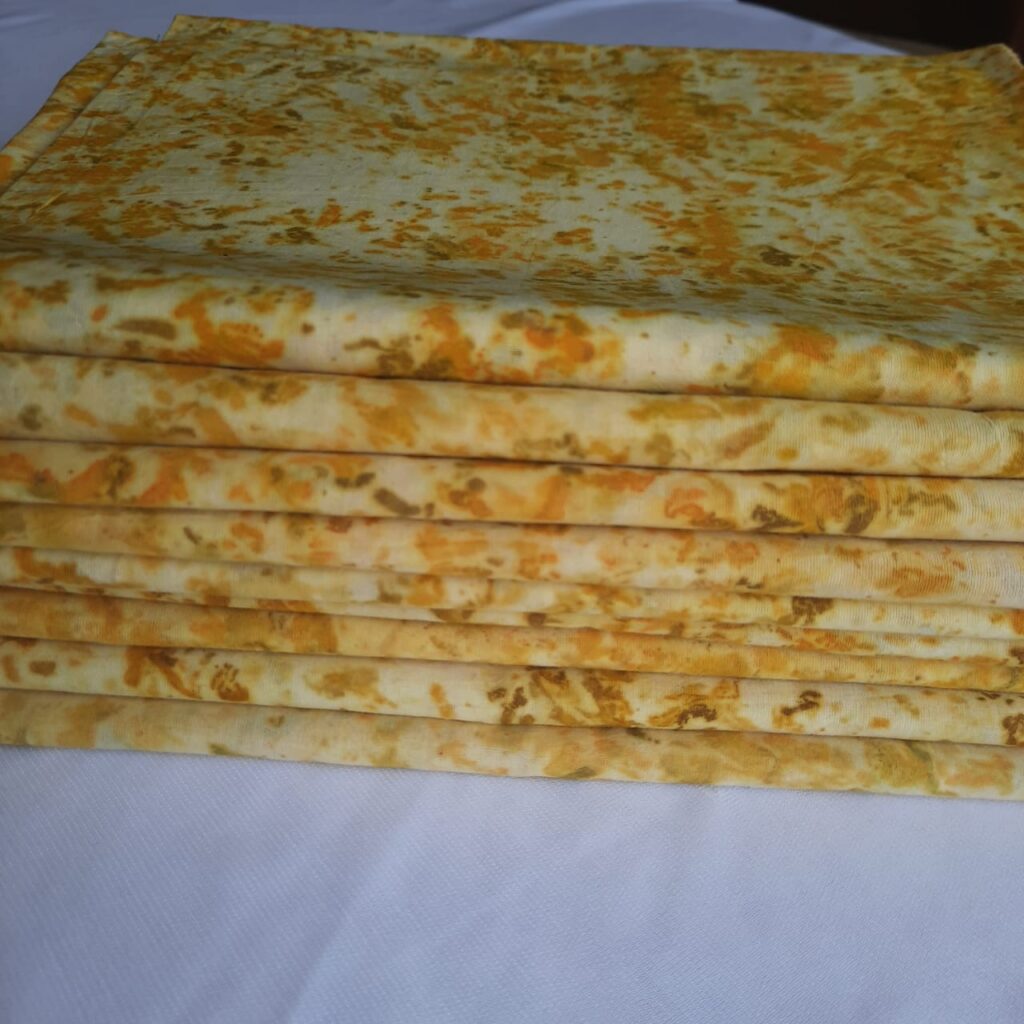Gold Dust Campaign
An innovative project dedicated to transforming waste marigold flowers into a range of eco-friendly and sustainable products.
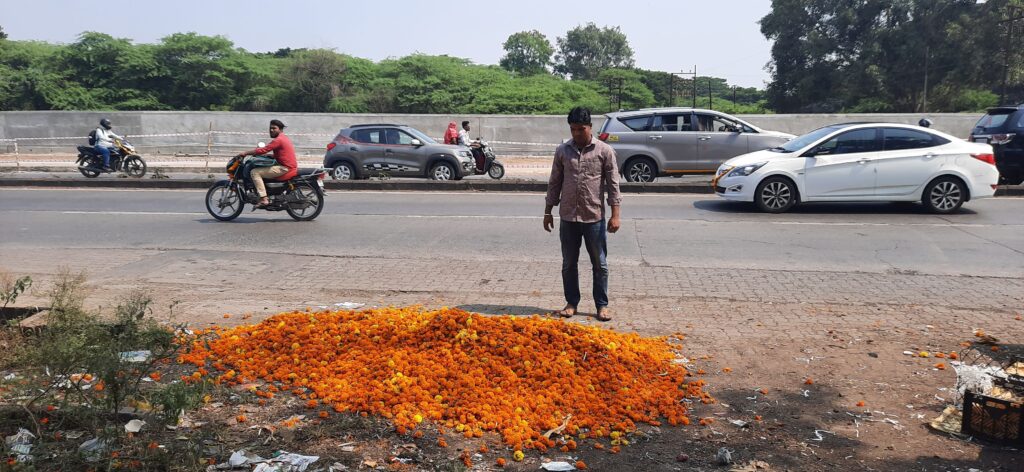
Origins
The inspiration for the Gold Dust Campaign emerged while driving through the streets of Pune, where heaps of discarded marigold flowers were left to wither. This sight motivated the ecoexist team to take action, cleaning the streets and collecting the marigold flowers. These agro-waste materials were then transported to Awhalwadi, where innovative women transformed them into a new line of eco-friendly products. Through this initiative, not only were the streets of Pune cleaned, but the campaign also empowered rural women, promoted sustainability, and demonstrated the creative potential of recycling agro-waste.
What is Agro-waste?
Agro-waste, also known as agricultural waste, refers to the by-products generated from various agricultural activities. This includes crop residues like straw, husks, and stems, as well as organic waste from the production of fruits, vegetables, and flowers. These materials are often abundant and, if not properly managed, can lead to significant environmental issues such as pollution and greenhouse gas emissions. However, when creatively and efficiently utilized, agro-waste holds tremendous potential for generating eco-friendly products and promoting sustainability.
Drawbacks of Agro-waste
Despite its potential, agro-waste presents several challenges. Its availability is highly variable and dependent on seasonal agricultural cycles and climate conditions. For example, weather changes can drastically affect crop yields, leading to inconsistent supplies of agro-waste. This unpredictability complicates efforts to establish reliable supply chains and production processes. Additionally, managing and processing agro-waste requires labor-intensive and time-sensitive efforts to prevent spoilage, adding another layer of complexity.
Uses of Agro-Waste
Agro-waste, when effectively harnessed, can be transformed into a wide array of valuable products. One innovative use is in the creation of dried marigold products. Dried marigold petals are perfect for festive decorations such as rangolis, wedding confetti, and vibrant celebrations like Holi. The flowers’ natural colors and fragrance can be utilized in fabric dyeing, producing stunning textiles with rich, golden hues. After serving their decorative purposes, these flowers can be composted, contributing to a circular economy where waste is continuously repurposed
Process
Learn about the step by step process that converts agro-waste into eco-friendly products
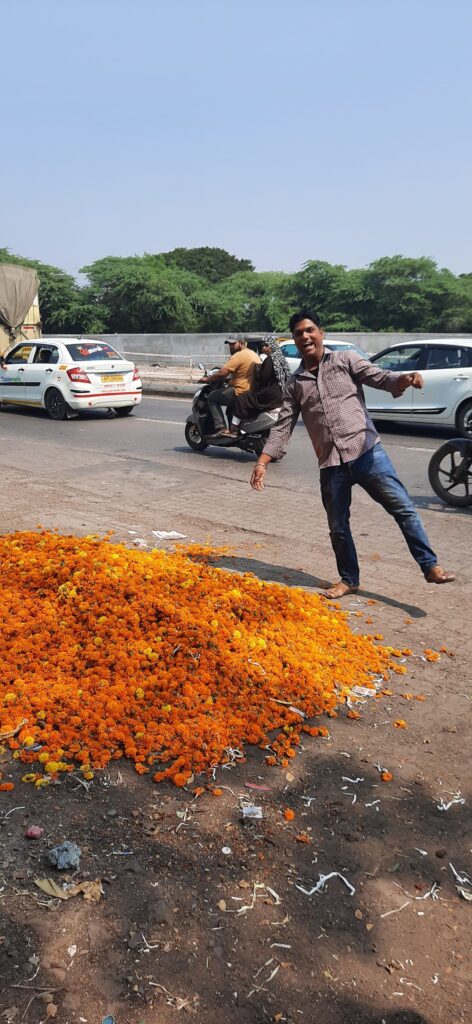
Collection and Transportation
The process begins with the ecoexist team observing the aftermath of festive seasons like Dussehra, where heaps of marigold flowers are discarded on the streets of Pune. Recognizing the wasteful nature of this disposal, the team takes the initiative to collect these flowers, effectively cleaning the streets and preventing the flowers from going to waste. These collected marigold flowers are then transported to the village of Ahwalwadi, where they will undergo further processing. This initial step is crucial in turning what would otherwise be waste into a valuable resource.
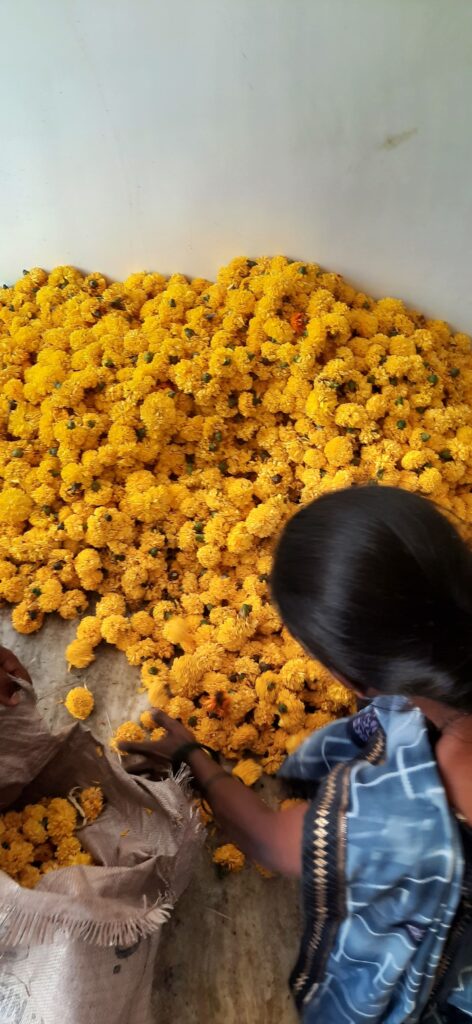
Sorting and Weighing
The process begins with the ecoexist team observing the aftermath of festive seasons like Dussehra, where heaps of marigold flowers are discarded on the streets of Pune. Recognizing the wasteful nature of this disposal, the team takes the initiative to collect these flowers, effectively cleaning the streets and preventing the flowers from going to waste. These collected marigold flowers are then transported to the village of Ahwalwadi, where they will undergo further processing. This initial step is crucial in turning what would otherwise be waste into a valuable resource.
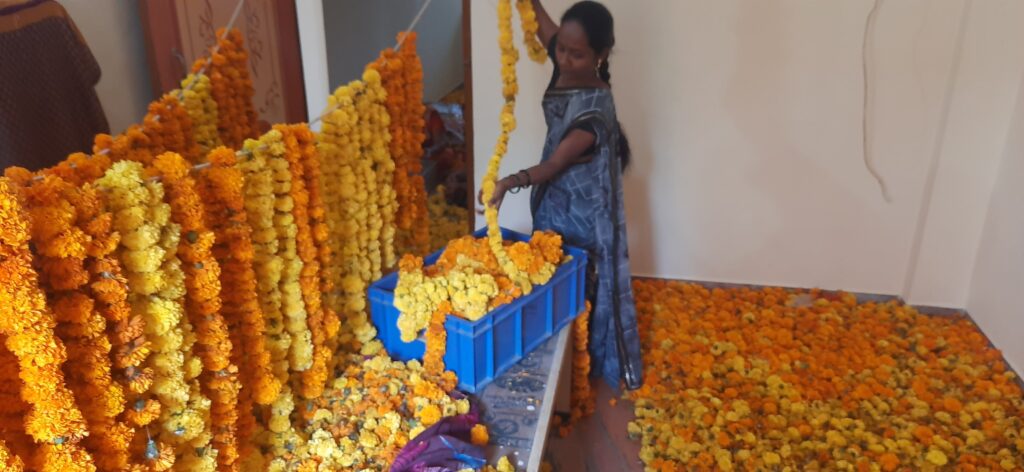
Drying
After sorting, the flowers are strung into long garlands, a preparatory step for the drying process. These garlands are then hung in a dry, dark space to prevent pest infestations and to ensure that the flowers dry evenly. The natural pest-repellent properties of marigolds aid in this process, making it more efficient. The flowers are left to dry until they become crisp, which typically takes a few days. Proper drying is crucial as it preserves the flowers’ color and quality, making them suitable for various creative uses.
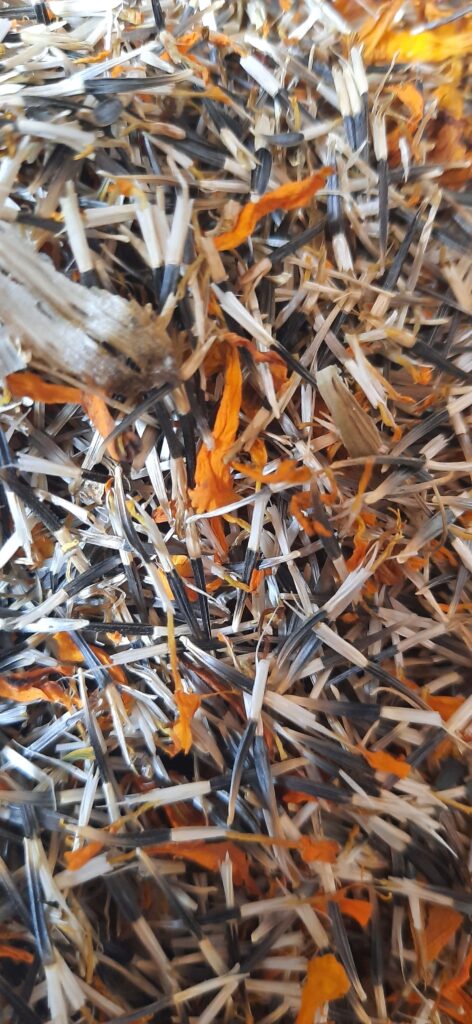
Separation of Flower Parts
Once the flowers are thoroughly dried, they are carefully pulled apart by hand. This manual separation involves sorting the petals, bases, stems, and seeds. The petals are set aside for various uses such as fabric dyeing, decoration, and crafting. The bases and stems are collected for composting, while any seeds are gathered to be replanted, ensuring a sustainable cycle. This step is labor-intensive but vital, as it allows for the maximum utilization of each part of the flower.
Empowerment and Production
Decentralized Units
In Ahwalwadi, the production process is decentralized, allowing women to work from their homes. This arrangement enables them to balance work with family responsibilities, fostering a sense of community and shared purpose.
Training and Skill Development
The initiative provides training in sustainable practices, craftsmanship, and entrepreneurship. Women are equipped with the skills needed to transform agro-waste into valuable products, fostering both their professional and personal growth.
Financial and Social Empowerment
Through their involvement in the project, women gain financial independence and social empowerment. They are able to contribute to their household income while also gaining confidence and recognition within their community.
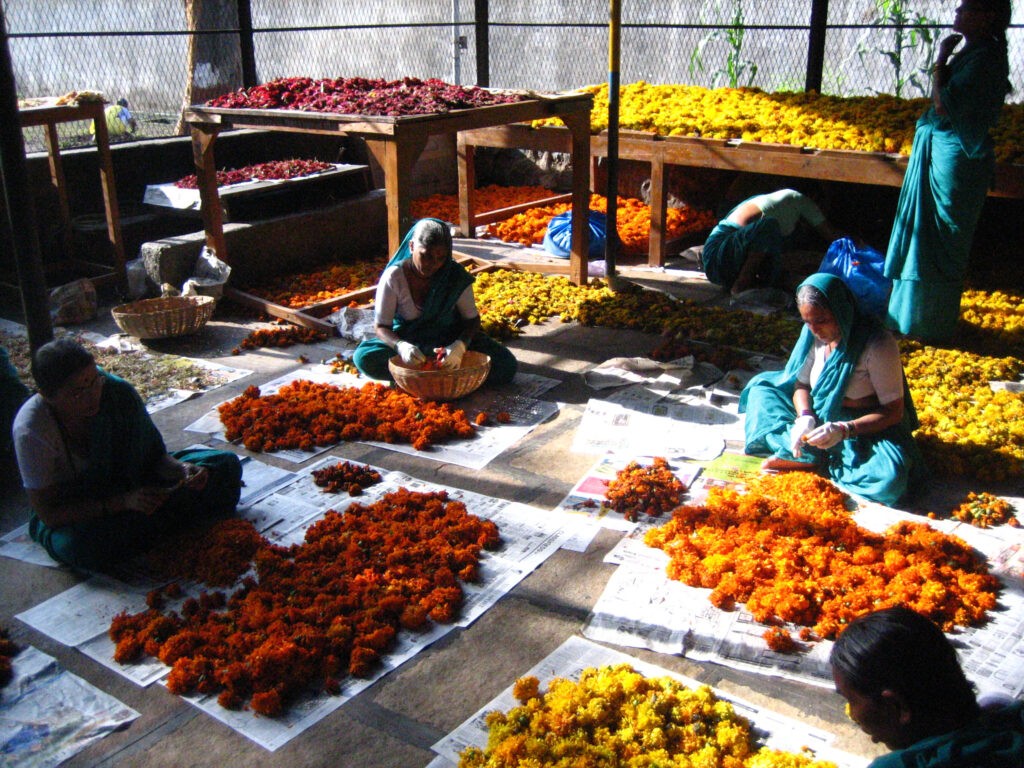
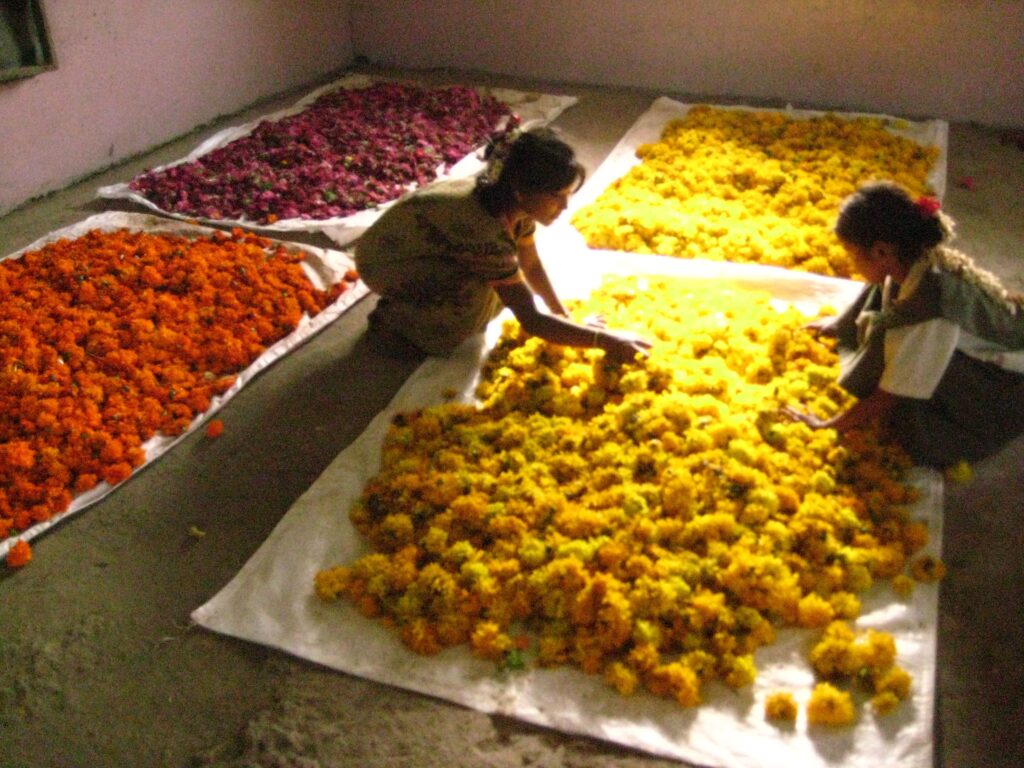
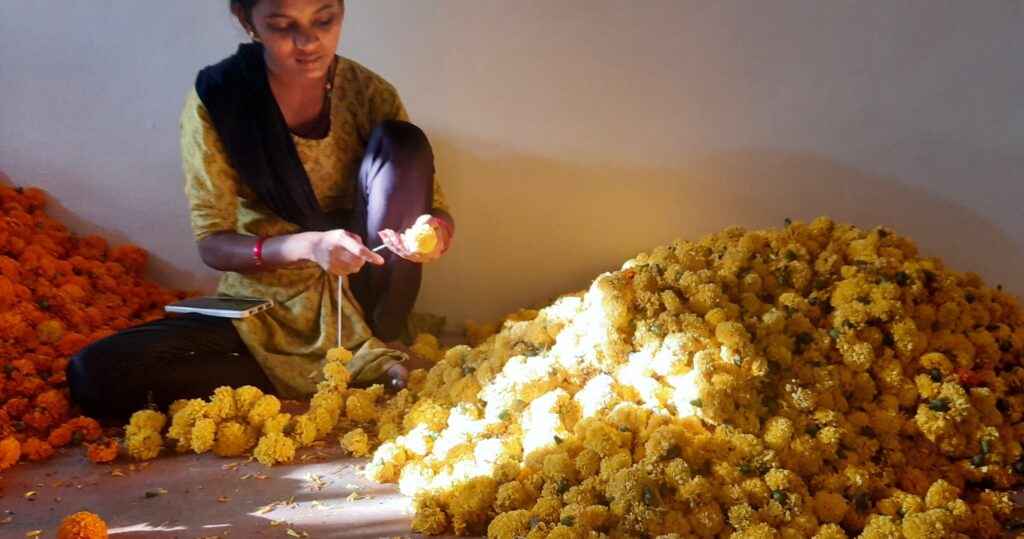
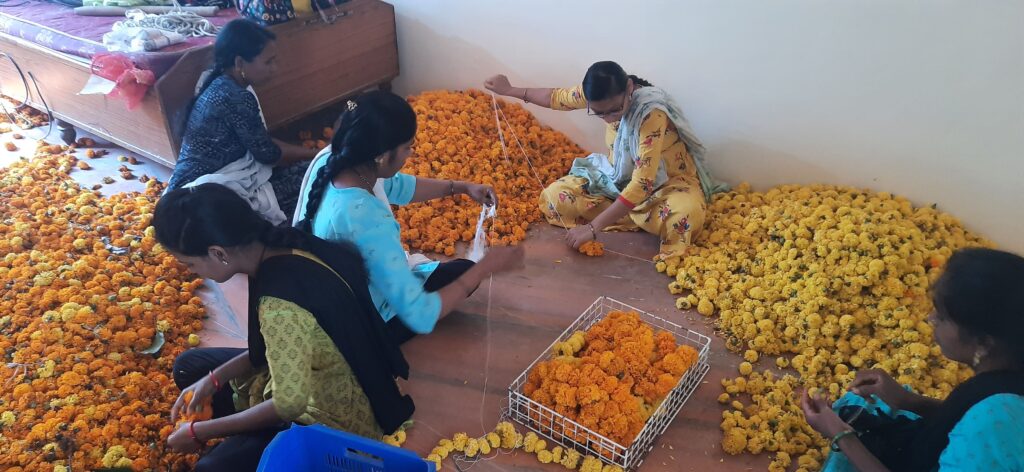
Creative Recycling
